A Doll’s House Essay Topics & Samples
In this particular section, you can find excellent topics for A Doll’s House essay. You might be a tired student who is out of ideas. You may be a journalist who wants to write a piece about this great play. No matter what brought you here. Custom-Writing.org experts have created this guide to provide enough inspiration for everyone to keep on going!
Our specialists will write a custom essay specially for you!
Here, we put together the best A Doll’s House essay questions and topics supplemented with short prompts that give extra details. As a bonus, there are essay samples! Moreover, they are all related to the materials discussed in other parts of this guide, so don’t forget to check them out as well!
- 🏆 Essay Questions
- 💡 Essay Topics with Prompts
- 📝 Essay Examples

🏆 A Doll’s House Essay Questions
- A Doll’s House: what does the play’s title mean?
- What do macaroons symbolize in A Doll’s House?
- Is a Doll’s House a feminist play?
- Why was Ibsen forced to create an alternate ending for A Doll’s House?
- How does Nora Helmer change by the end of the play?
- What is Nora’s secret in A Doll’s House?
- Who is the antagonist in A Doll’s House?
- What genre is A Doll’s House?
- How did Ibsen use dramatic irony in A Doll’s House?
- What is the theme of A Doll’s House?
- Nora and Torvald: what is wrong with their relationship?
- In what ways does Dr. Rank provide a contrast to Torvald?
- What is the most wonderful thing that Nora Helmer talks about in the play’s last scene?
💡 A Doll’s House Essay Topics with Prompts
- Describe your opinion about how realistic the play is. Usually, Ibsen’s play is viewed as realistic . However, there might be some contradictions. For example, all the literary devices the author uses. Metaphors and plenty of symbols don’t precisely align with realism in A Doll’s House . Consider both points of view and write an argumentative essay.
- How are gender roles in A Doll’s House represented? One of the central themes in the play is gender roles and feminism . Nora’s behavior is strongly identified with those issues as she tries to find the way out of her dependency. It wasn’t surprising back then for a woman to be an obedient, quiet wife who only takes care of the house and kids. Ibsen opens up this theme through Nora’s conflict.
- Write A Doll’s House character analysis. It is a rather generic theme, so you should think it through and pick one or more characters you wish to analyze. One of the options is to make a comparative analysis of two characters of your choice. If you are not sure where to begin, check out our complete guide to this play!
- Discuss the purpose and effects of dramatic irony in A Doll’s House . Ibsen uses irony in his play a few times. Even though it doesn’t really fit the definition of drama, which is A Doll’s House genre, it adds s excellent impression. Find the most prominent examples of this literary device and try to discuss why the author put it there.
- The theme of marriage and love in the play. It would be an argumentative essay on love in A Doll’s House . Ibsen highlights this theme as one of the most important. You may consider adding a few paragraphs about how characters other than Nora perceive love and the institution of marriage.
- What are the most prominent symbols in the play? Every literary piece has at least one symbol presented in it. Ibsen’s play is not an exception. The symbolism in A Doll’s House is tightly related to the central themes such as freedom and gender roles. Moreover, you should discuss their roles in the play and relevance back then.
- Mrs. Linde’s influence on Nora’s personal development. It seems like everything starts escalating with Mrs. Linde’s arrival in A Doll’s House . However, you would need to consider some indirect influence of that event. It appears that their first conversation might have brought some insights for Nora and promoted her transformation as well as self-realization.
- Compare and contrast A Doll’s House characters: Nora and Krogstad. This A Doll’s House essay should be focused mainly on the similarities between these two characters. They have both committed a crime to save their loved ones. Therefore, you need to consider how Nora and Krogstad feel about social rules and why they were so desperate.
- The theme of freedom in Ibsen’s A Doll’s House . Look into how the play’s characters use the word “freedom.” In this writing, you should focus on the differences between perspectives introduced by various characters. Moreover, it might be a good idea to mention the causes of such mindsets. For example, society at the time was quite influential.
- Discuss Torvald’s point of view on his life. As the play progresses, the audience might notice that Torvald’s perspective is somehow too idealistic. Even though A Doll’s House is supposed to be realistic, this character prefers imaginary life to the real world. Here, you need to find the moments when such Torvald’s traits are the most obvious and analyze them.
- When Mrs. Linde calls Nora a “child,” how does it reflect the truth? In one of the scenes, Mrs. Linde comments on Nora’s irresponsible and inappropriate behavior by calling her a “child.” However, no one truly knows Nora’s natural character and struggles. How fair is it to make such judgments?
- Look into an inheritance in Ibsen’s A Doll’s House. How does the author describe the traits that characters inherit from their relatives? For example, Dr. Rank blames his father for having a disease that slowly kills him. Meanwhile, Nora’s relationship with her father was complicated to the point that even Torvald comments on it.
- What is the meaning behind the title of Ibsen’s play? A Doll’s House might as well hide a metaphor behind its title. Torvald often calls his wife his “doll.” How does it reflect their relationship? What is the correlation of the title to the central theme of gender roles? Nora doesn’t seem to feel free in her house and is getting more and more tired of those plays.
- How feminist is A Doll’s House ? Ibsen highlights gender roles’ theme in the play and reflects on the state of this issue back then. Even though the rise of feminism would happen years after its publication, the author had already introduced a character representing the movement . Discuss Nora’s liberation from her husband in this essay.
- Analyze the progression of Nora’s character in the play. Nora is not the only dynamic character in A Doll’s House . However, she is one who undergoes the most change. She goes from pretending to be an obedient and happy housewife to a woman who is ready to leave her family to seek independence and her true self.
- Write about the theme is self-sacrifice in Ibsen’s play. The central themes of A Doll’s House are gender roles, freedom, and marriage. However, there are some less popularly analyzed issues that Ibsen highlights. For instance, self-sacrifice appears to be a shared aspect amongst some characters. All female characters have experienced it, and some men in the play have gone through it as well.
📝 A Doll’s House Essay Examples
- Thorvald and Nora in A Doll’s House: Character Analysis
- Theme and Conflict in “A Doll’s House” by Henrik Ibsen
- The Role of Women in A Doll’s House
- Historical Context of A Doll’s House
- Characters in A Doll’s House: Analysis
- Ibsen’s A Doll’s House: Critical Analysis
- Symbolism in A Doll’s House
- Nora in A Doll’s House: Character Analysis
- Setting in A Doll’s House by Henrik Ibsen
- The Role of Women in A Doll’s House by Henrik Ibsen
- “Ghosts” vs. “A Doll’s House” by Henrik Ibsen
- Nora in “The Doll’s House” by Henrik Ibsen
Thank you for reading this article! If you haven’t found the perfect title idea, try our topic-generating tool . Any questions left? Check the QA section !
- Share to Facebook
- Share to Twitter
- Share to LinkedIn
- Share to email
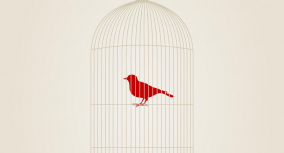
The play may seem as a simple story about an average family. A husband thinks he’s a good family member, while his wife takes care of three children and is supposed to be charming and dependent. However, everything turns upside down when the truth is revealed. If you want to...
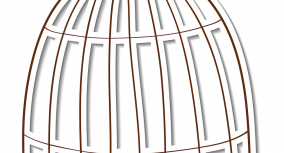
If you’re looking for A Doll’s House summary, you’re in the right place. This page prepared by our experts contains a short play’s synopsis, an illustrated timeline, as well as detailed summaries of A Doll’s House act 1, act 2, and act 3. Let’s dive right in! ✂️ A Doll’s...
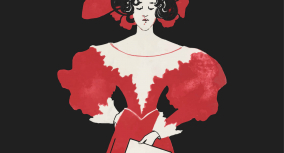
Want to know more about A Doll’s House characters? Nora and Torvald, as well as minor characters in The Doll’s House by Henrik Ibsen, are discussed in this article by Custom-Writing.org experts. Let’s dive right in! 🗺️ A Doll’s House Character Map Below you’ll find A Doll’s House character map....

Ibsen introduces quite a lot of serious topics in his play. The key themes in A Doll’s House are: love and marriage, money and work, feminism and gender roles. All of them are related to social issues that are still considered relevant nowadays. Gender roles and the way women stand...

On this page with A Doll’s House analysis, you can find a few aspects that may help you understand Ibsen’s work. Custom-Writing.org experts have prepared it for those who love getting into details. The first things to look into are A Doll’s House symbolism and literary devices since there may...

In case you don’t have enough time to read out the complete guide on Ibsen’s A Doll’s House, this section can serve you well. There might be too much information available about this play, which is quite confusing and exhausting since it would take forever to go through all of...

Dr. Rank is generally considered to be Torvald’s foil because of such different attitudes and behavior. The most sticking aspect is how the two men treat Nora. It is clear that Torvald doesn’t see his wife as an individual, which is one of the leading causes of her transformation. Meanwhile,...
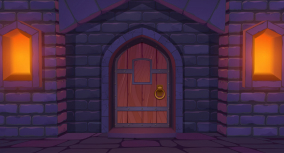
The setting of Ibsen’s A Doll’s House is not totally clarified. It is only said that the play takes place in some city or town in Norway. Moreover, everything happens at Helmer’s house. There is a reason why the place is described so generally. Such a trick prevents the audience...

Henrik Ibsen wrote A Doll’s House in 1879. The same year the play was published and performed for the first time. It appeared to be a pretty revolutionary piece, from the perspective of both the perspective and genre. Ibsen’s play started up a trend for realistic writing. However, it wasn’t...

A Doll’s House takes place at the same time period as when it was written. Nowadays, we call it the Victorian era, since those were the years of Queen Victoria’s reign. That time was characterized by specific social norms that dictated how marriages and families should be run. Ibsen highlights...

There are quite a few themes that Ibsen highlights in his play. A Doll’s House is a unique mix of drama and realism, which allows the author to work on relevant and essential topics. Marriage, gender roles, money, and society are only a few of the themes that open up...

A Doll’s House is Henrik Ibsen’s play which describes challenges that women of that time had to go through. We can only assume that this realistic piece was quite relevant in the Victorian era. The author pictures a life of an average Norwegian family that seems happy. However, everything starts...

It would only be fair to claim that A Doll’s House‘s central theme is gender equality. Even though Ibsen masterfully raised many others, such as marriage and social code, they don’t seem to be as crucial in the play. Nora’s character represents the theme of gender roles and proves that...
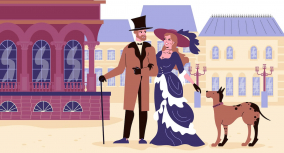
The mentality and perspective of people change with time. Therefore, we shouldn’t be shocked by the fact that the audience saw Nora as scandalous in the Victorian era. Back then, the whole of Europe had pretty traditional views on marriage, and women who leave their families behind just to self-explore...
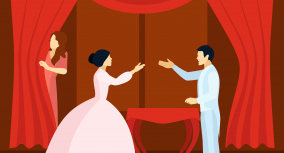
A Doll’s House is considered to be a drama. Ibsen presented it in the limits of one family. However, this issue concerns many people. At the same time, the play is also tragic, even though no character is shown dying. A Doll’s House introduces a conflict between an individual and...
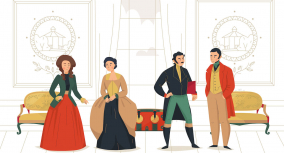
The play is set in some random Norwegian town in the Victorian age. No details are describing the exact location and time of the events. However, even that little information about the setting can give you some insight into Ibsen’s style and intentions. It appears to be vaguely described on...
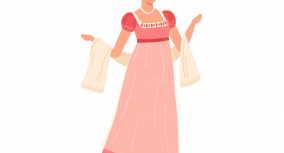
Mrs. Linde is Nora’s old friend who unexpectedly shows up at Helmer’s house at the beginning of the play. Her husband died, leaving her without any money, so she comes to ask for a job. She seems to be a sensible and understanding woman yet following the generally accepted social...

It didn’t take long for the play to go out to the public. A Doll’s House was first performed in December 1879, the same year Ibsen finished it. The Royal Theatre in Copenhagen was honored to offer the stage for it. Even though Henrik Ibsen was quite popular, this play...

Nora is the main character of the play, and we get to find out about her secret when Mrs. Linde comes to have a chat with her. It appears that Nora borrowed a large sum of money from Krogstad to pay for the trip to Italy. It was the only...

A Doll’s House was written and presented to the public in 1879. It was a time when women had few rights. Ibsen used it as the central theme for his play, which was met with some criticism. However, we can’t ignore that the social issues he highlights weren’t relative back...

A Doll’s House ending was considered somewhat scandalous back in the Victorian age. At the time, when women were supposed to be obedient wives and take care of the family, Nora’s decision to leave everything behind was not exactly socially acceptable. She chose independence and the path to self-discovery over...
113 A Doll’s House Essay Topic Ideas & Examples
🏆 best a doll’s house topic ideas & essay examples, 👍 interesting topics to write about a doll’s house, 🎓 good essay topics on a doll’s house, ❓ a doll’s house essays questions.
- Feminism in “A Doll’s House” by Henrik Ibsen Nora is referred by her husband as a songbird, a lark, a squirrel, names that suggest how insignificant she is to her.
- A Doll’s House Modernism Theme In A Doll’s House, one of the outstanding depictions of this way of thinking was seen at the end of the play; in other words, the overall plot of the story has been used to […]
- Relationships in “A Doll’s House” by Henrik Ibsen He cares mostly about his money and reputation, and through his pressure and arrogance, he makes Nora believe that her life has to only be devoted to her husband and children.
- A Doll’s House by Norway’s Henrik Ibsen It’s ironic when Torvald says that he pretends Nora is in some kind of trouble, and he waits the time he can rescue her.
- Liberation of Women: “A Doll’s House” Analysis While in some scenes the lights are turned off, towards the end of the play the intensity of light increases especially when Nora is talking to her husband. This is escalated towards the end of […]
- Setting’s Influence: “A Doll’s House” and “The Handmaid’s Tale” This paper focuses on the setting in the works A Doll’s House and The Handmaid’s Tale and its impact on the characters and the author’s context through the prism of the chosen historical periods, culture, […]
- Drama Analysis: A Doll’s House This paper analyses the position of a woman in society, the aspect of social life as well as the importance of responsibility in the drama A Doll’s House.
- Analysis of Setting, Character Development, and Symbolism in the Play A Doll’s House by Henrik Ibsen. In the play, the author creates the unity of setting so as to underscore the feeling that the main heroine Nora is the prisoner of her life.
- “A Doll’s House” and “Death of a Salesman” Comparison The main conflict of the play is thoroughly intergenerational and lies in Willy’s inability to accept the decision of his older son Biff, as the latter is willing to leave town to go to farmland […]
- “A Doll’s House” by H. Ibsen: Do Desires Have a Gender? In the end, many of the characters’ desires are shaped by social norms that are imposed on them, and while some characters choose to go along with society’s expectations of them, others revolt and seek […]
- Freedom in Henrik Ibsen’s “A Doll’s House” Literature Analysis In Henrik Ibsen’s A Doll’s House, the main character, Nora is not an intellectual, and spends no time scouring books or libraries or trying to make sense of her situation.
- Marriage in Plays “A Doll’s House” and “Fences” The revelation of her husband’s true character and perspective on life causes Nora’s disillusionment with her relationship and the institution of marriage in general.
- Henrik Ibsen’s “A Doll’s House” Analysis The purpose of this paper is to discuss the prominent elements of fiction used in A Doll’s House as the most vivid example of Ibsen’s approach, analyze the applied dramatic techniques, and describe different layers […]
- Feminism in “A Doll’s House” by Ibsen Benhabib’s chapter, “Feminism and the Question of Postmodernism,” highlights the connection between feminism and postmodernism in contemporary society. Nasrin examines the role of feminism in enforcing justice and human rights activism.
- “A Doll’s House” by Henrik Ibsen He watches and describes the atmosphere of all-absorbing illusion in the society, drawing attention to the rights and destiny of a woman in it. The core of this illusion is a woman’s position in society, […]
- Plays Comparison: Pygmalion, A Doll’s House and Trifles This especially appears to be the case in the situations when what happened to be the actual truth, simply does much of a logical sense in the concerned person’s eyes.
- The Interpretation of Henrik Ibsen’s A Doll’s House Presented by Patrick Garland The role of women in the society of the 19th century is a rather controversial point for the discussion in literature because of the fact the end of the century can be characterized as the […]
- Comparison of Nora From A Doll’s House by Henrik Ibsen and Elisa From The Chrysanthemums by John Steinbeck The story of John Steinbeck describes only one day of life of the character, while Henrik Ibsen uses three acts in order to provide the whole picture and to describe the rise of the conflict […]
- Deception in “A Doll’s House” by Henrik Ibsen It is important to note that the topic of deception and self-deception in Henrik Ibsen’s “A Doll’s House” is of paramount criticality in order to understand the underlying message and characters’ actions.
- “A Doll’s House” by Henrik Ibsen Review Thus, in the story, the main theme, which is the sacrificial role of female characters, is supported by the conflict of societal standards and personal intentions alongside symbolic elements.
- Personal Freedom in A Doll’s House, A Room of One’s Own, and Diary of a Madman In Chapter Three of Virginia Woolf’s A Room of One’s Own, the protagonist attempts to make sense of the nonsensical elements of female history, namely, how it could be that “in Athena’s city, where women […]
- Henrik Ibsen’s History of “A Doll’s House” Drama While I desired Nora to become a type of Everyman in the exploration of the development of the individual as a real and valid human being, this type of exploration was only possible within this […]
- Semiotic Analysis of “A Doll’s House” by H. Ibsen Nora is in an intermediate position between a man and a tree, decorating the tree and allowing her husband to such behavior.
- The Play “A Doll’s House” by Henrik Ibsen: Feminist Themes Hossain’s article explores the manifestations of the ideas of post-modernist feminism in the play through the analysis of the main character’s development and the overall social order where women were subordinate to men.
- Positive Role Model in “A Doll’s House” by Henrik Ibsen To sum up, A Doll’s House presents the harsh life of the mother and wife, Nora, who is trapped with her husband with no choices and goals.
- Feminism in “A Doll’s House” Play by Ibsen Her father used to refer to her as his doll-child, and he used to play with her in the same way she used to play with him. As a result, near the end of the […]
- Similarities and Differences in “The Little Foxes” and “A Doll’s House” The same parallel exists with Ibsen’s Nora, who realized that to her husband, she was a doll to be played with and admired.
- Ibsen’s A Doll’s House Play From a Biographical Perspective Later in the play, the reader learns that this is a childhood trait and she cannot allow her husband to feel obligated to her.
- The Play ‘A Doll’s House’ The play A Doll’s House is the best play the audience is presented to. Besides, the actors must come up to the audience from behind the scenes because the viewer does not need to […]
- Symbolism in “A Doll’s House” Play by Henrik Ibsen The main objective of the play “A Doll’s House” is to advocate for the ability of each individual in making decisions that are not based on the influences of other persons around him or her. […]
- “The Father” and “A Doll’s House” Resting on these facts, it is possible to analyze some works which belong to the same period of time in order to understand the main ideas of the epoch and the authors message to readers.
- Drama: A Doll’s House by Henrik Ibsen Given actions at the end of the play, she may appear to be a villain, but, in fact, she is a victim of her circumstances she was driven to her decision by the blackmail and […]
- The Change of Gender Roles This similarity is one of the most important to focus on the structure of the narrative. In both plays, the main actions of the characters are not directly described by the authors.
- “A Doll’s House”, “The Storm” and “The Victims” Even though Nora is loyal to her husband in the “Doll’s House”, she is brave enough to look forward to a future on her own due to her husband’s unwillingness to become more considerate.
- Henrick Ibsen’s A Doll’s House Nora’s father is mentioned quite often in the play, a fact that makes him equal to his daughter because of the deeds of the daughter.
- Costs and Benefits of Conformity and Rebellion in Selected Literature The works are often a depiction of the way of life of the people in the society at that particular period of time In this essay, the author uses the works of chosen authors to […]
- Parents as Failed Role Models: A Doll’s House and Fight Club The drinking culture of parents revealed in the story of the Fight Club underscores the elements that increase children’s exposure to alcohol and drug taking.
- Women’s Refusal in Euripides’ “Medea” and Henrik Ibsen’s “A Doll’s House”
- Nora’s Character Development in Ibsen’s “A Doll’s House”
- Using Soren Kierkegaard’s “Philosophies of Truth” to Analyze “A Doll’s House”
- The Transformation of a Woman in Ibsen’s “A Doll’s House”
- An Analysis of a Woman’s Manhood in “A Doll’s House”
- The Role of the Dress in “A Doll’s House”
- Reasons for Nora Helmer to Stay in Henrik Ibsen’s “A Doll’s House”
- Male Roles in the Plays “Antigone” and “A Doll’s House”
- Searching for a Hero in Ibsen’s “A Doll’s House”
- The Binary Opposition of Phylogeny Versus Misogyny in Henrik Ibsen’s “A Doll’s House”
- The Theme of Feminism in Henrik Ibsen’s “A Doll’s House”
- Women’s Rights as a Theme of “A Doll’s House”
- The Role of Symbolism in “A Doll’s House”
- Deception of Family in “Death of a Salesman” and “A Doll’s House”
- Gender and Theatricality in “A Doll’s House”
- How Does the Title “A Doll’s House” Demonstrate an Allegory for Women’s Role at That Time
- Plot, Irony, Characterization of Ibsen’s “A Doll’s House”
- Representation of Patriarchal Ideology in “A Doll’s House”
- Rights of Women in the Nineteenth Century and in Henrik Ibsen’s “A Doll’s House”
- Role Playing and Control in “A Doll’s House”
- Escaping the Cage of Marriage in Henrik Ibsen’s “A Doll’s House”
- Significance of Nora’s Financial Contract With Krogstad in Henrik Ibsen’s “A Doll’s House”
- The Morality of Relationships in “A Doll’s House”
- Symbols of Personal Renewal in Henrik Ibsen’s “A Doll’s House”
- The Problem of Free Will in Henrik Ibsen’s “A Doll’s House”
- The Detrimental Nature of a Love for Money in Ibsen’s “A Doll’s House”
- Historical Context of “A Doll’s House”
- Metaphors and Realistic in the Play “A Doll’s House”
- Societal Views of Women in the Victorian Era in Henrik Ibsen’s “A Doll’s House”
- The Position of Masculinity and Femininity in “A Doll’s House”
- Symbols and Symbolism as Indicative of Key Themes in Ibsen’s “A Doll’s House”
- Reading “A Doll’s House” Through Aristotelian Ideas
- The Importance of Truth in “A Doll’s House” by Henrik Ibsen
- Themes and Symbols in Henrik Ibsen’s “A Doll’s House”
- A Double Standard in “A Doll’s House”
- Perception of Love and the Institution of Marriage in “A Doll’s House”
- The Character Develpoment of Nora Helmer in “A Doll’s House”
- Mrs. Linde’s Influence on Nora’s Personal Development in “A Doll’s House”
- Links Between “Crime and Punishment” and “A Doll’s House”
- Comparison of Feminist Literary Heroines Nora in Ibsen’s “A Doll’s House” and Antigone in Sophocles’ “Antigone”
- Appearance vs. Reality in Henrik Ibsen’s “A Doll’s House”
- Limitations on Women in “A Doll’s House”
- Individual Growth, Marriage, and Social Convention in “A Doll’s House”
- Society’s Influence on the Relationships in “A Doll’s House”
- Inferior Role of a Married Woman Nora in “A Doll’s House” by Henrik Ibsen
- Social Issues as Reflected in “A Doll’s House” by Henrik Ibsen
- How Does Nora Helmer Change by the End of “A Doll’s House”?
- Why Was Ibsen Forced to Create an Alternate Ending for “A Doll’s House”?
- How Is Feminism Portrayed in “A Doll’s House”?
- What Does the Play’s Title “A Doll’s House” Mean?
- Why Is Nora From “A Doll’s House” a Hypocrite?
- What Are Three Main Themes of the Play “A Doll’s House”?
- What Is the Moral of “A Doll’s House”?
- What Is the Symbolic Meaning of the Tarantella in “A Doll’s House”?
- What Are the Symbols in “A Doll’s House”?
- Why Did Nora From “A Doll’s House” Borrow Money?
- What Is Wrong With the Relationship of Nora and Torvald in “A Doll’s House”?
- What Does “A Doll’s House” Say About Society?
- Why Does Nora Dance Wildly in “A Doll’s House”?
- What Does the Christmas Tree Symbolize in “A Doll’s House”?
- How Is “A Doll’s House” an Example of Realism?
- What Crime Did Nora Commit in “A Doll’s House”?
- In What Ways Does Dr. Rank Provide a Contrast to Torvald in “A Doll’s House”?
- Who Is the Antagonist of “A Doll’s House”?
- What Does Nora’s Happiness Symbolize in “A Doll’s House”?
- Why Is Nora Compared to a Doll in “A Doll’s House”?
- What Does the Lamp Come To Symbolize in “A Doll’s House”?
- What Does Nora Sacrifice in “A Doll’s House”?
- What Do Macaroons Represent in “A Doll’s House”?
- What Is the Most Wonderful Thing That Nora Helmer Talks About in the Last Scene of “A Doll’s House”?
- Why Does Nora Forge Her Father’s Signature?
- What Is the Central Problem of “A Doll’s House”?
- What Does the Mailbox With a Key Symbolize in “A Doll’s House”?
- What Secret Has Nora Been Keeping in “A Doll’s House”?
- How Did Ibsen Use Dramatic Irony in “A Doll’s House”?
- Chicago (A-D)
- Chicago (N-B)
IvyPanda. (2023, December 5). 113 A Doll’s House Essay Topic Ideas & Examples. https://ivypanda.com/essays/topic/a-dolls-house-essay-examples/
"113 A Doll’s House Essay Topic Ideas & Examples." IvyPanda , 5 Dec. 2023, ivypanda.com/essays/topic/a-dolls-house-essay-examples/.
IvyPanda . (2023) '113 A Doll’s House Essay Topic Ideas & Examples'. 5 December.
IvyPanda . 2023. "113 A Doll’s House Essay Topic Ideas & Examples." December 5, 2023. https://ivypanda.com/essays/topic/a-dolls-house-essay-examples/.
1. IvyPanda . "113 A Doll’s House Essay Topic Ideas & Examples." December 5, 2023. https://ivypanda.com/essays/topic/a-dolls-house-essay-examples/.
Bibliography
IvyPanda . "113 A Doll’s House Essay Topic Ideas & Examples." December 5, 2023. https://ivypanda.com/essays/topic/a-dolls-house-essay-examples/.
- A Midsummer Night’s Dream Titles
- A Raisin in the Sun Essay Titles
- The Bluest Eye Titles
- A Rose for Emily Research Topics
- Canterbury Tales Research Ideas
- The Awakening Questions
- The Cask of Amontillado Research Ideas
- Coming of Age Research Topics
'A Doll's House' Questions for Study and Discussion
Henrik Ibsen's Famous Feminist Play
Dover Publications
- Authors & Texts
- Top Picks Lists
- Study Guides
- Best Sellers
- Plays & Drama
- Shakespeare
- Short Stories
- Children's Books
- M.A., English Literature, California State University - Sacramento
- B.A., English, California State University - Sacramento
A Doll's House is an 1879 play by Norwegian writer Henrik Ibsen , which tells the story of a discontented wife and mother. It was highly controversial at the time of its release, as it raised questions and criticism about the societal expectations of marriage, especially the subservient role women were expected to play. Nora Helmer is desperate to keep her husband Torvald from discovering that she forged loan documents, and thinks if she is revealed, he will sacrifice his honor for hers. She even contemplates killing herself to spare him this indignity.
Nora's being threatened by Nils Krogstad, who knows her secret and wants to reveal it if Nora doesn't help him. He's about to be fired by Torvald, and wants Nora to intervene. Her attempts are unsuccessful, however. She asks Kristine, a long-lost love of Krogstad's, to help her, but Kristine decides Torvald should know the truth, for the good of the Helmers' marriage.
When the truth comes out, Torvald disappoints Nora with his self-centered reaction. It's at this point Nora realizes she has never truly discovered who she is but has lived her life as a plaything for the use of first her father, and now her husband. At the end of the play, Nora Helmer leaves her husband and children in order to be herself, which she is unable to do as part of the family unit.
The play is based on a true story, of Laura Kieler, a friend of Ibsen's who went through many of the same things Nora did. Kieler's story had a less happy ending; Her husband divorced her and had her committed to an asylum.
Discussion Topics
- What is important about the title? Who is the "doll" Ibsen refers to?
- Who is the more significant female character in terms of plot development, Nora or Kristine? Explain your answer.
- Do you think Kristine's decision not to prevent Krogstad from revealing the truth to Torvald is a betrayal of Nora? Does this act ultimately hurt or benefit Nora?
- How does Henrik Ibsen reveal character in A Doll's House ? Is Nora a sympathetic character? Did your opinion of Nora change from the beginning of the play to its conclusion?
- Does the play end the way you expected? Do you think this was a happy ending?
- A Doll's House is generally considered a feminist work. Do you agree with this characterization? Why or why not?
- How essential is the setting, both in terms of time period and location? Could the play have taken place anywhere else? Would the final outcome have had the same impact if A Doll's House had been set in the present day? Why or why not?
- Knowing that the plot is based on a series of events that happened to a female friend of Ibsen's, did it bother you that he used Laura Kieler's story without it benefiting her?
- Which actress would you cast as Nora if you were to stage a production of A Doll's House ? Who would play Torvald? Why is the choice of actor important to the role? Explain your choices.
- 'A Doll's House' Summary
- The Character of Nora Helmer
- 'A Doll's House' Overview
- 'A Doll's House' Characters: Descriptions and Analysis
- Profile of Torvald Helmer From "A Doll's House"
- 'A Doll's House': Themes and Symbols
- 'A Doll's House' Quotes
- 'A Doll's House' Character Study: Dr. Rank
- "A Doll's House" Character Study: Nils Krogstad
- "A Doll's House" Character Study: Mrs. Kristine Linde
- Nora's Monologue from "A Doll's House"
- Torvald Helmer's Monologue From 'A Doll's House'
- Biography of Henrik Ibsen, Norwegian Playwright
- The Best Plays For New Theatergoers
- Quotes From Henrik Ibsen's 'Hedda Gabler'
- 4 Creative Ways to Analyze Plays
Literary Theory and Criticism
Home › Drama Criticism › Analysis of Henrik Ibsen’s A Doll’s House
Analysis of Henrik Ibsen’s A Doll’s House
By NASRULLAH MAMBROL on July 27, 2020 • ( 0 )
Whether one reads A Doll’s House as a technical revolution in modern theater, the modern tragedy, the first feminist play since the Greeks, a Hegelian allegory of the spirit’s historical evolution, or a Kierkegaardian leap from aesthetic into ethical life, the deep structure of the play as a modern myth of self-transformation ensures it perennial importance as a work that honors the vitality of the human spirit in women and men.
—Errol Durbach, A Doll’s House : Ibsen’s Myth of Transformation
More than one literary historian has identified the precise moment when modern drama began: December 4, 1879, with the publication of Ibsen ’s Etdukkehjem ( A Doll’s House ), or, more dramatically at the explosive climax of the first performance in Copenhagen on December 21, 1879, with the slamming of the door as Nora Helmer shockingly leaves her comfortable home, respectable marriage, husband, and children for an uncertain future of self-discovery. Nora’s shattering exit ushered in a new dramatic era, legitimizing the exploration of key social problems as a serious concern for the modern theater, while sounding the opening blast in the modern sexual revolution. As Henrik Ibsen ’s biographer Michael Meyer has observed, “No play had ever before contributed so momentously to the social debate, or been so widely and furiously discussed among people who were not normally interested in theatrical or even artistic matter.” A contemporary reviewer of the play also declared: “When Nora slammed the door shut on her marriage, walls shook in a thousand homes.”
Ibsen set in motion a transformation of drama as distinctive in the history of the theater as the one that occurred in fifth-century b.c. Athens or Elizabethan London. Like the great Athenian dramatists and William Shakespeare, Ibsen fundamentally redefined drama and set a standard that later playwrights have had to absorb or challenge. The stage that he inherited had largely ceased to function as a serious medium for the deepest consideration of human themes and values. After Ibsen drama was restored as an important truth-telling vehicle for a comprehensive criticism of life. A Doll’s House anatomized on stage for the first time the social, psychological, emotional, and moral truths beneath the placid surface of a conventional, respectable marriage while creating a new, psychologically complex modern heroine, who still manages to shock and unsettle audiences more than a century later. A Doll’s House is, therefore, one of the ground-breaking modern literary texts that established in fundamental ways the responsibility and cost of women’s liberation and gender equality. According to critic Evert Sprinchorn, Nora is “the richest, most complex” female dramatic character since Shakespeare’s heroines, and as feminist critic Kate Millett has argued in Sexual Politics, Ibsen was the first dramatist since the Greeks to challenge the myth of male dominance. “In Aeschylus’ dramatization of the myth,” Millett asserts, “one is permitted to see patriarchy confront matriarchy, confound it through the knowledge of paternity, and come off triumphant. Until Ibsen’s Nora slammed the door announcing the sexual revolution, this triumph went nearly uncontested.”
The momentum that propelled Ibsen’s daring artistic and social revolt was sustained principally by his outsider status, as an exile both at home and abroad. His last deathbed word was “ Tvertimod !” (On the contrary!), a fitting epitaph and description of his artistic and intellectual mindset. Born in Skien, Norway, a logging town southwest of Oslo, Ibsen endured a lonely and impoverished childhood, particularly after the bankruptcy of his businessman father when Ibsen was eight. At 15, he was sent to Grimstad as an apothecary’s apprentice, where he lived for six years in an attic room on meager pay, sustained by reading romantic poetry, sagas, and folk ballads. He later recalled feeling “on a war footing with the little community where I felt I was being suppressed by my situation and by circumstances in general.” His first play, Cataline , was a historical drama featuring a revolutionary hero who reflects Ibsen’s own alienation. “ Cataline was written,” the playwright later recalled, “in a little provincial town, where it was impossible for me to give expression to all that fermented in me except by mad, riotous pranks, which brought down upon me the ill will of all the respectable citizens who could not enter into that world which I was wrestling with alone.”
Largely self-educated, Ibsen failed the university entrance examination to pursue medical training and instead pursued a career in the theater. In 1851 he began a 13-year stage apprenticeship in Bergen and Oslo, doing everything from sweeping the stage to directing, stage managing, and writing mostly verse dramas based on Norwegian legends and historical subjects. The experience gave him a solid knowledge of the stage conventions of the day, particularly of the so-called well-made play of the popular French playwright Augustin Eugène Scribe and his many imitators, with its emphasis on a complicated, artificial plot based on secrets, suspense, and surprises. Ibsen would transform the conventions of the well-made play into the modern problem play, exploring controversial social and human questions that had never before been dramatized. Although his stage experience in Norway was marked chiefly by failure, Ibsen’s apprenticeship was a crucial testing ground for perfecting his craft and providing him with the skills to mount the assault on theatrical conventions and moral complacency in his mature work.

In 1864 Ibsen began a self-imposed exile from Norway that would last 27 years. He traveled first to Italy, where he was joined by his wife, Susannah, whom he had married in 1858, and his son. The family divided its time between Italy and Germany. The experience was liberating for Ibsen; he felt that he had “escaped from darkness into light,” releasing the productive energy with which he composed the succession of plays that brought him worldwide fame. His first important works, Brand (1866) and Peer Gynt (1867), were poetic dramas, very much in the romantic mode of the individual’s conflict with experience and the gap between heroic assertion and accomplishment, between sobering reality and blind idealism. Pillars of Society (1877) shows him experimenting with ways of introducing these central themes into a play reflecting modern life, the first in a series of realistic dramas that redefined the conventions and subjects of the modern theater.
The first inklings of his next play, A Doll’s House , are glimpsed in Ibsen’s journal under the heading “Notes for a Modern Tragedy”:
There are two kinds of moral laws, two kinds of conscience, one for men and one, quite different, for women. They don’t understand each other; but in practical life, woman is judged by masculine law, as though she weren’t a woman but a man.
The wife in the play ends by having no idea what is right and what is wrong; natural feelings on the one hand and belief in authority on the other lead her to utter distraction. . . .
Moral conflict. Weighed down and confused by her trust in authority, she loses faith in her own morality, and in her fitness to bring up her children. Bitterness. A mother in modern society, like certain insects, retires and dies once she has done her duty by propagating the race. Love of life, of home, of husband and children and family. Now and then, as women do, she shrugs off her thoughts. Suddenly anguish and fear return. Everything must be borne alone. The catastrophe approaches, mercilessly, inevitably. Despair, conflict, and defeat.
To tell his modern tragedy based on gender relations, Ibsen takes his audience on an unprecedented, intimate tour of a contemporary, respectable marriage. Set during the Christmas holidays, A Doll’s House begins with Nora Helmer completing the finishing touches on the family’s celebrations. Her husband, Torvald, has recently been named a bank manager, promising an end to the family’s former straitened financial circumstances, and Nora is determined to celebrate the holiday with her husband and three children in style. Despite Torvald’s disapproval of her indulgences, he relents, giving her the money she desires, softened by Nora’s childish play-acting, which gratifies his sense of what is expected of his “lark” and “squirrel.” Beneath the surface of this apparently charming domestic scene is a potentially damning and destructive secret. Seven years before Nora had saved the life of her critically ill husband by secretly borrowing the money needed for a rest cure in Italy. Knowing that Torvald would be too proud to borrow money himself, Nora forged her dying father’s name on the loan she received from Krogstad, a banking associate of Torvald.
The crisis comes when Nora’s old schoolfriend Christina Linde arrives in need of a job. At Nora’s urging Torvald aids her friend by giving her Krogstad’s position at the bank. Learning that he is to be dismissed, Krogstad threatens to expose Nora’s forgery unless she is able to persuade Torvald to reinstate him. Nora fails to convince Torvald to relent, and after receiving his dismissal notice, Krogstad sends Torvald a letter disclosing the details of the forgery. The incriminating letter remains in the Helmers’ mailbox like a ticking time-bomb as Nora tries to distract Torvald from reading it and Christina attempts to convince Krogstad to withdraw his accusation. Torvald eventu-ally reads the letter following the couple’s return from a Christmas ball and explodes in recriminations against his wife, calling her a liar and a criminal, unfit to be his wife and his children’s mother. “Now you’ve wrecked all my happiness—ruined my whole future,” Torvald insists. “Oh, it’s awful to think of. I’m in a cheap little grafter’s hands; he can do anything he wants with me, ask me for anything, play with me like a puppet—and I can’t breathe a word. I’ll be swept down miserably into the depths on account of a featherbrained woman.” Torvald’s reaction reveals that his formerly expressed high moral rectitude is hypocritical and self-serving. He shows himself worried more about appearances than true morality, caring about his reputation rather than his wife. However, when Krogstad’s second letter arrives in which he announces his intention of pursuing the matter no further, Torvald joyfully informs Nora that he is “saved” and that Nora should forget all that he has said, assuming that the normal relation between himself and his “frightened little songbird” can be resumed. Nora, however, shocks Torvald with her reaction.
Nora, profoundly disillusioned by Torvald’s response to Krogstad’s letter, a response bereft of the sympathy and heroic self-sacrifice she had hoped for, orders Torvald to sit down for a serious talk, the first in their married life, in which she reviews their relationship. “I’ve been your doll-wife here, just as at home I was Papa’s doll-child,” Nora explains. “And in turn the children have been my dolls. I thought it was fun when you played with me, just as they thought it fun when I played with them. That’s been our marriage, Torvald.” Nora has acted out the 19th-century ideal of the submissive, unthinking, dutiful daughter and wife, and it has taken Torvald’s reaction to shatter the illusion and to force an illumination. Nora explains:
When the big fright was over—and it wasn’t from any threat against me, only for what might damage you—when all the danger was past, for you it was just as if nothing had happened. I was exactly the same, your little lark, your doll, that you’d have to handle with double care now that I’d turned out so brittle and frail. Torvald—in that instant it dawned on me that I’ve been living here with a stranger.
Nora tells Torvald that she no longer loves him because he is not the man she thought he was, that he was incapable of heroic action on her behalf. When Torvald insists that “no man would sacrifice his honor for love,” Nora replies: “Millions of women have done just that.”
Nora finally resists the claims Torvald mounts in response that she must honor her duties as a wife and mother, stating,
I don’t believe in that anymore. I believe that, before all else, I’m a human being, no less than you—or anyway, I ought to try to become one. I know the majority thinks you’re right, Torvald, and plenty of books agree with you, too. But I can’t go on believing what the majority says, or what’s written in books. I have to think over these things myself and try to understand them.
The finality of Nora’s decision to forgo her assigned role as wife and mother for the authenticity of selfhood is marked by the sound of the door slamming and her exit into the wider world, leaving Torvald to survey the wreckage of their marriage.
Ibsen leaves his audience and readers to consider sobering truths: that married women are the decorative playthings and servants of their husbands who require their submissiveness, that a man’s authority in the home should not go unchallenged, and that the prime duty of anyone is to arrive at an authentic human identity, not to accept the role determined by social conventions. That Nora would be willing to sacrifice everything, even her children, to become her own person proved to be, and remains, the controversial shock of A Doll’s House , provoking continuing debate over Nora’s motivations and justifications. The first edition of 8,000 copies of the play quickly sold out, and the play was so heatedly debated in Scandinavia in 1879 that, as critic Frances Lord observes, “many a social invitation in Stockholm during that winter bore the words, ‘You are requested not to mention Ibsen’s Doll’s House!” Ibsen was obliged to supply an alternative ending for the first German production when the famous leading lady Hedwig Niemann-Raabe refused to perform the role of Nora, stating that “I would never leave my children !” Ibsen provided what he would call a “barbaric outrage,” an ending in which Nora’s departure is halted at the doorway of her children’s bedroom. The play served as a catalyst for an ongoing debate over feminism and women’s rights. In 1898 Ibsen was honored by the Norwegian Society for Women’s Rights and toasted as the “creator of Nora.” Always the contrarian, Ibsen rejected the notion that A Doll’s House champions the cause of women’s rights:
I have been more of a poet and less of a social philosopher than people generally tend to suppose. I thank you for your toast, but must disclaim the honor of having consciously worked for women’s rights. I am not even quite sure what women’s rights really are. To me it has been a question of human rights. And if you read my books carefully you will realize that. Of course it is incidentally desirable to solve the problem of women; but that has not been my whole object. My task has been the portrayal of human beings.
Despite Ibsen’s disclaimer that A Doll’s House should be appreciated as more than a piece of gender propaganda, that it deals with universal truths of human identity, it is nevertheless the case that Ibsen’s drama is one of the milestones of the sexual revolution, sounding themes and advancing the cause of women’s autonomy and liberation that echoes Mary Wollstonecraft’s A Vindication of the Rights of Woman and anticipates subsequent works such as Kate Chopin’s The Awakening, Virginia Woolf’s A Room of One’s Own and Betty Friedan’s The Feminine Mystique.
A Doll’s House Ebook PDF (1 MB)
Analysis of Henrik Ibsen’s Plays
Share this:
Categories: Drama Criticism , Literature
Tags: A Doll's House Analysis , A Doll's House Feminism , A Doll's House Guide , A Doll's House Summary , A Doll's House Themes , A Doll’s House , A Doll’s House Critcal Studies , A Doll’s House Criticism , A Doll’s House Essay , A Doll’s House Feminist Reading , A Doll’s House Lecture , A Doll’s House PDF , Analysis Henrik Ibsen’s A Doll’s House , Bibliography Henrik Ibsen’s A Doll’s House , Character Study Henrik Ibsen’s A Doll’s House , Criticism Henrik Ibsen’s A Doll’s House , Drama Criticism , Essays Henrik Ibsen’s A Doll’s House , Feminism , Henrik Ibsen , Henrik Ibsen’s A Doll’s House , Literary Criticism , Notes Henrik Ibsen’s A Doll’s House , Plot Henrik Ibsen’s A Doll’s House , Simple Analysis Henrik Ibsen’s A Doll’s House , Study Guides Henrik Ibsen’s A Doll’s House , Summary Henrik Ibsen’s A Doll’s House , Synopsis Henrik Ibsen’s A Doll’s House , Themes Henrik Ibsen’s A Doll’s House
Related Articles

Leave a Reply Cancel reply
You must be logged in to post a comment.
The Doll's House
by Katherine Mansfield
The doll's house essay questions.
What is significant about the Burnell girls' school in "The Doll's House"?
"The Doll's House" uses the microcosm of the Burnell children's mixed-income school to illustrate how the economic divisions of class create barriers between people in a society—barriers that perpetuate hierarchical attitudes, prejudice, and ostracism. Social class is most apparent in the story through Mansfield's contrast of the economically and socially privileged lives of the Burnell children to the impoverished, underclass subsistence of the Kelveys. While the Burnells live in a large house with servants, special-occasion dresses, a servant-driven buggy that picks them up from school, and eat thick mutton sandwiches, the Kelveys wear clothes made from the Burnell's recycled tablecloth and eat jam sandwiches wrapped in newsprint. The Burnells' mother forbids her daughters from associating with the Kelveys, and the Burnells' social exclusion of the Kelveys is adopted by other students, thereby cementing the Kelveys' social ostracism. In this way, Mansfield shows how the class prejudice of the Burnells' mother leads to a recreation of the greater society's class hierarchy within the setting of the school.
What does the doll's house at the center of the story represent?
In "The Doll's House," the doll's house the Burnell children receive symbolizes social privilege. A gift from Mrs. Hay, a wealthy guest at the Burnells' home, the doll's house serves to elevate the Burnell girls' social status even higher within the social hierarchy of their mixed-income school. The eldest daughter Isabel understands that she can use the doll's house to enhance the aura of importance that already surrounds her. She intuitively knows that by only allowing two girls per day to see the doll's house, she can create a hierarchy of importance by determining who gets to see it first. In this way, Mansfield depicts how the privilege of owning the doll's house extends to the privilege of who gets to see the doll's house. Once every girl at school except the Kelveys has seen the doll's house, the hierarchy ceases to matter. However, privilege is still used as a weapon to separate everyone who has seen the doll's house from the only two who haven't because of their underclass status.
What is the significance of the little lamp in the doll's house?
The lamp on the dining table in the doll's house is a symbol of Kezia and Else's innocence. Kezia distinguishes herself from her sisters by zeroing in on the amber-colored lamp with the white globe when she and her sisters are first viewing the doll's house. Kezia admires how lifelike the lamp is, and marvels at how when she shakes it she discovers it is full of a liquid that emulates oil. When her sisters boast about the doll's house the next day at school, Isabel doesn't discuss the lamp with the emphasis Kezia believes it deserves. The lamp doesn't enter the story again until the end of the story when Else Kelvey tells her sister Lil, "I seen the little lamp." The line confirms that Else heard Kezia mention the lamp and was similarly enchanted by it when she finally saw the famous doll's house. In their shared appreciation of the little lamp, Else and Kezia are united in their innocence; they are the only characters who appreciate the doll's house for what it is and not the privileges it confers.

The Doll’s House Questions and Answers
The Question and Answer section for The Doll’s House is a great resource to ask questions, find answers, and discuss the novel.
Describe Kezia's act of kindness.
While swinging in her yard, Kezia sees the Kelveys walking down the road. As the Kelveys come nearer; their shadows stretch long, reaching across the road so that the shadows of their heads are in the buttercups. Kezia clambers back up the gate,...
Pat pried it open with his penknife, and the whole house front swung back, and—there you were, gazing at one and the same moment into the drawing-room and dining-room, the kitchen and two bedrooms.
Meaning, Pat used his penknife to open the side...
Who is described using animal images?
The Kelveys are described with animal images. The images serve as a symbol of their alienation from society.
Else: “a little white owl”.
The girls move “like two little stray cats”.
Beryl shoos the girls away “as if they were chickens."
Study Guide for The Doll’s House
The Doll's House study guide contains a biography of Katherine Mansfield, literature essays, quiz questions, major themes, characters, and a full summary and analysis.
- About The Doll's House
- The Doll's House Summary
- Character List

A Doll's House
By henrik ibsen.
- Literature /
- A Doll's House /
- Discussion & Essay Questions

Cite This Source
Available to teachers only as part of the teaching a doll's houseteacher pass, teaching a doll's house teacher pass includes:.
- Assignments & Activities
- Reading Quizzes
- Current Events & Pop Culture articles
- Challenges & Opportunities
- Related Readings in Literature & History
Sample of Discussion & Essay Questions
- What is the meaning of the play's title?
Tired of ads?
Logging out…, logging out....
You've been inactive for a while, logging you out in a few seconds...
W hy's T his F unny?
A Doll's House
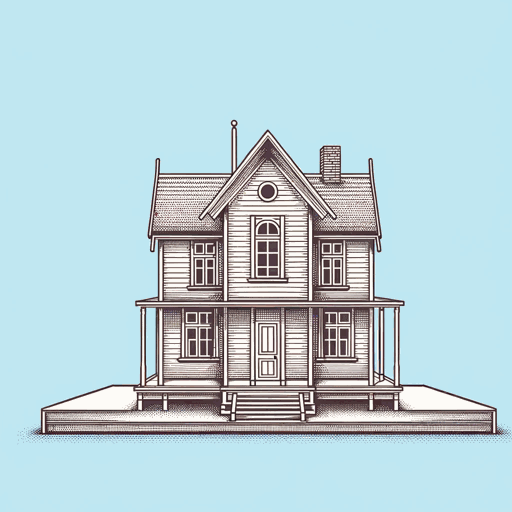
53 pages • 1 hour read
A modern alternative to SparkNotes and CliffsNotes, SuperSummary offers high-quality Study Guides with detailed chapter summaries and analysis of major themes, characters, and more. For select classroom titles, we also provide Teaching Guides with discussion and quiz questions to prompt student engagement.
Act Summaries & Analyses
Character Analysis
Symbols & Motifs
Important Quotes
Essay Topics
Discussion Questions
Discussion Questions Beta
Use the dropdowns below to tailor your questions by title, pre- or post-reading status, topic, and the difficulty level that suits your audience. Click "Generate," and that's it! Your set of ready-to-discuss questions will populate in seconds.
Select and customize your discussion questions!
Your Discussion Questions
Your results will show here.
Our AI tools are evolving, sometimes exhibiting inaccuracies or biases that don't align with our principles. Discover how AI and expert content drive our innovative tools. Read more
Related Titles
By Henrik Ibsen

An Enemy of the People
Henrik Ibsen
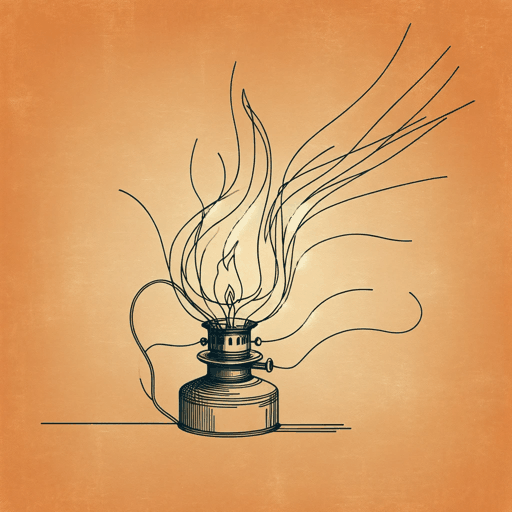
Hedda Gabler

The Master Builder

The Wild Duck

When We Dead Awaken
Featured Collections
View Collection
Feminist Reads
A Doll’s House Essay
A Doll’s House was written by Henrik Ibsen in 1879. A Doll’s House is not only one of Henrik Ibsen’s most famous plays, but it has also been seen as the starting point for realist drama. A Doll’s House, along with Brand and Peer Gynt, are often considered to be the first modern plays written in Europe. A Doll’s House is a play about power, money, guilt, duty, and family relationships.
A Doll’s House starts with Mrs. Nora Helmer who decides that her family should have an evening at home to celebrate Torvald’s birthday even though there are various outside activities planned earlier on that day. After getting all the children to bed Nora makes some coffee and brings some cake for herself and Torvald. She notices that the maid is not coming in to clear the table, despite several requests. As it turns out, Aune (the maid) is sick and unable to come to work. Nora remarks on Aune’s “poor condition”, saying she will take up Aune’s duties while Aune is ill.
Eventually, Nora forgets about Aune entirely as she becomes engrossed in her own thoughts of how their life together has become stifling; all play rather than essential sustenance of family life had ceased, with Torvald preferring to read newspapers alone in his study each evening rather than engaging with his wife or children. Nora decides she must break free from the chains that bind her. Aune, who turns up at one point is too sick to help with Nora’s children. Nora promises Aune that she will hire a nurse for Aune once Aune has recovered from her illness.
Aune leaves and Torvald enters. He asks about Aune, not believing that an important event would prevent Aune from attending work. The two converse until Nora suggests that they go out to visit Mrs. Linde (who had earlier announced temporary departure due to poor health). Torvald becomes irate over this suggestion as he does not have time to waste on “unimportant” people currently immersed in newspaper reading. He complains of the dinner being cold, further displaying his ignorance of his family and Aune’s conditions.
Nora sees past Torvald’s narrow-mindedness and decides to sit down and play the piano without his permission. He becomes even angrier because Nora has lost track of time while playing; instead of taking up Aune’s duties, she should be finishing the housework such as what Aune would typically do. Nora sees that her husband is quite ignorant in not understanding why Aune is unable to come into work, yet he will not allow Aune a few days’ leave when needed. She tells Torvald about Aune’s illness, but he does not believe it to be a serious affliction.
Not wanting to argue with him so late night, Nora decides to postpone Aune’s endeavor to find a nurse for Aune. The play moves to the following morning, as Nora narrates her daily routine (how she is to be “the perfect wife”). She is aware of Torvald’s explicit caresses every time he returns home from work, but his attentions are merely symbolic gestures signifying their financial arrangement. Aune enters, having recovered from her illness enough to return to work.
Aune relates that one of Mrs. Linde’s family friends has offered Aune a better-paid position in another town. Aune asks Nora whether she believes she is doing the right thing by leaving Nora in need of help with the children and housework. Aune also asks Nora if Torvald will speak to Aune about her departure. Aune requests that Nora not mention Aune’s leaving to Torvald, because Aune does not want him to feel obliged to give Aune a reference. Aune also discloses why she has taken the position, stating she is leaving for “personal reasons”.
Mrs. Linde enters, stating that an old friend of hers who works as a lawyer in Rome has offered her well-paid work caring for his motherless daughter. She requests permission from both Aune and Nora before accepting the job offer. The two are supportive; they will need help while Aune is gone. Mrs. Linde remarks on how overjoyed she is by the prospect of finding employment once again after such a long period of unemployment. Aune also shares her plans of finding a nurse for Aune, but Nora is reluctant to share the news, Aune, leaving with Torvald because he will be disappointed at Aune’s departure.
Aune warns Mrs. Linde that she must not mention Aune’s departure to Torvald either. Aune leaves and Mrs. Linde takes over Aune’s duties in the kitchen while Nora continues playing the piano. Torvald once again returns from work, ruining his routine when he finds no one in the sitting room waiting for him. He calls out “Nora”, and Nora responds by going into her bedroom where Torvald sits on a chair reading a newspaper. She tells him about Aune having left the house. Aune, Nora points out, will definitely provide a reference for Aune.
Torvald begins to worry about Aune leaving, citing that Aune’s work has been outstanding and she would be an exceptional nurse even to his children. He accuses Nora of not being considerate enough towards Aune in allowing Aune the choice of whether or not to stay. Torvald proceeds with his newspaper reading while Nora returns to playing the piano; he comments on how well-played the piece is and praises her talent at playing it so excellently together with such speed and agility. Torvald remarks that Nora never ceases to amaze him (“”Det star mig sa n? som for/Og det driver mig saa forf? rdeligt til vanvidd””).
Aune returns from the kitchen, where Aune has been packing her belongings. Aune asks Nora if she could have a few moments alone with Torvald to say goodbye. A few minutes later Aune asks Mrs. Linde to take a peek at Aune and Torvald to see whether they are finished talking yet because Aune cannot hear anything from Aune’s bedroom. Mrs. Linde enters first before calling for Aune; she tells Aune that it would be best for Aune not to come inside as it appears that there is trouble between them.
Aune stays anyway, deciding that enough time should have passed by now as Mrs. Linde re-enters Aune’s room. Aune enters the bedroom to see Torvald embracing Aune; they are back in love. Aune overhears that Torvald has no idea Aune is leaving until Aune hears Torvald describe how it feels like Aune has left him all alone with three children—he knows exactly how much Aune means to Nora (and vice versa); he wants Aune to stay, even though he can offer her very little except for his gratitude and admiration of Aune’s work.
More Essays
- Is Feminism really a theme in Ibsen’s, A Doll’s House?
- A Dolls House Comparison Essay
- Essay on Societal Norms In A Dolls House
- “A Doll’s House” by Hendrik Ibsen
- A Dolls House Women Essay
- Irony In A Doll’s House
- Macaroons In A Doll’s House Essay
- A Doll’s House Controversy
- A Doll’s House: Theme of Emancipation of A Woman
Leave a Comment Cancel reply
Save my name, email, and website in this browser for the next time I comment.

Revisiting the Legal Milestone: Roe V. Wade from a Fresh Perspective
This essay about the landmark case of Roe v. Wade provides a comprehensive overview of its historical significance and ongoing impact on reproductive rights in America. It explores the legal principles underlying the decision, including the recognition of a constitutional right to privacy and the establishment of a trimester framework for regulating abortion. The essay also examines the enduring controversies and challenges that have shaped the post-Roe landscape, while highlighting the broader societal and political implications of the decision. Ultimately, it underscores the pivotal role of Roe v. Wade in shaping the discourse surrounding individual autonomy, state authority, and the right to choose.
How it works
In the annals of American legal history, few cases have left as indelible a mark as Roe v. Wade. This landmark decision, rendered by the United States Supreme Court in 1973, has sparked enduring debates and reshaped the discourse surrounding reproductive rights in the country. Delving into the intricacies of Roe v. Wade unveils a rich tapestry of legal principles, societal values, and political dynamics that continue to influence contemporary jurisprudence.
At its core, Roe v. Wade grappled with the fundamental question of individual autonomy versus state interests in the context of abortion rights.
The case emerged against the backdrop of a nation grappling with shifting social norms and evolving attitudes towards reproductive freedom. In this charged atmosphere, the Supreme Court confronted the task of reconciling conflicting viewpoints and crafting a legal framework that would balance competing interests with constitutional principles.
Central to the Court’s decision in Roe v. Wade was the recognition of a constitutional right to privacy, implicit in the Fourteenth Amendment’s Due Process Clause. This right, the Court held, encompassed a woman’s decision to terminate a pregnancy, thereby elevating reproductive autonomy to the status of a fundamental right. In doing so, the Court overturned existing state laws that criminalized or severely restricted access to abortion, heralding a new era in reproductive rights jurisprudence.
The trimester framework devised by the Court in Roe v. Wade represented a nuanced approach to the regulation of abortion, delineating the stages of pregnancy and corresponding state interests. During the first trimester, the Court affirmed a woman’s right to choose abortion without undue interference from the state. In the second trimester, the state’s interest in maternal health justified limited regulation of abortion procedures. Finally, in the third trimester, the state’s interest in protecting potential life became paramount, permitting regulations aimed at preserving fetal viability.
In the aftermath of Roe v. Wade, the legal landscape surrounding abortion rights has been marked by ongoing contention and legal challenges. Anti-abortion advocates, emboldened by the decision’s perceived overreach, have sought to curtail its reach through legislative and judicial means. From state-level restrictions to direct challenges before the Supreme Court, efforts to undermine Roe v. Wade have remained a constant feature of the political and legal landscape.
Despite these challenges, Roe v. Wade endures as a seminal precedent in American jurisprudence, shaping the contours of reproductive rights and serving as a touchstone for subsequent legal developments. Its legacy, however, extends beyond the realm of law, permeating societal attitudes and political discourse. The decision has sparked impassioned debates over the morality of abortion, the role of government in regulating personal choices, and the nature of individual rights in a pluralistic society.
Looking ahead, the future of Roe v. Wade and the broader landscape of reproductive rights in America remain uncertain. The composition of the Supreme Court, shifting political dynamics, and evolving social mores all stand to influence the trajectory of abortion rights in the country. As such, the significance of Roe v. Wade extends far beyond its immediate legal implications, encapsulating broader questions of justice, autonomy, and the limits of state authority.
In conclusion, Roe v. Wade stands as a testament to the power of the judiciary to shape societal norms and safeguard individual liberties. Though its journey has been fraught with challenges and controversies, the decision’s enduring legacy underscores its pivotal role in the ongoing struggle for reproductive rights. As America continues to grapple with the complexities of abortion policy, the principles enshrined in Roe v. Wade will remain a focal point of debate, reflection, and advocacy for generations to come.
Cite this page
Revisiting the Legal Milestone: Roe v. Wade from a Fresh Perspective. (2024, May 12). Retrieved from https://papersowl.com/examples/revisiting-the-legal-milestone-roe-v-wade-from-a-fresh-perspective/
"Revisiting the Legal Milestone: Roe v. Wade from a Fresh Perspective." PapersOwl.com , 12 May 2024, https://papersowl.com/examples/revisiting-the-legal-milestone-roe-v-wade-from-a-fresh-perspective/
PapersOwl.com. (2024). Revisiting the Legal Milestone: Roe v. Wade from a Fresh Perspective . [Online]. Available at: https://papersowl.com/examples/revisiting-the-legal-milestone-roe-v-wade-from-a-fresh-perspective/ [Accessed: 13 May. 2024]
"Revisiting the Legal Milestone: Roe v. Wade from a Fresh Perspective." PapersOwl.com, May 12, 2024. Accessed May 13, 2024. https://papersowl.com/examples/revisiting-the-legal-milestone-roe-v-wade-from-a-fresh-perspective/
"Revisiting the Legal Milestone: Roe v. Wade from a Fresh Perspective," PapersOwl.com , 12-May-2024. [Online]. Available: https://papersowl.com/examples/revisiting-the-legal-milestone-roe-v-wade-from-a-fresh-perspective/. [Accessed: 13-May-2024]
PapersOwl.com. (2024). Revisiting the Legal Milestone: Roe v. Wade from a Fresh Perspective . [Online]. Available at: https://papersowl.com/examples/revisiting-the-legal-milestone-roe-v-wade-from-a-fresh-perspective/ [Accessed: 13-May-2024]
Don't let plagiarism ruin your grade
Hire a writer to get a unique paper crafted to your needs.

Our writers will help you fix any mistakes and get an A+!
Please check your inbox.
You can order an original essay written according to your instructions.
Trusted by over 1 million students worldwide
1. Tell Us Your Requirements
2. Pick your perfect writer
3. Get Your Paper and Pay
Hi! I'm Amy, your personal assistant!
Don't know where to start? Give me your paper requirements and I connect you to an academic expert.
short deadlines
100% Plagiarism-Free
Certified writers

COMMENTS
A Doll's House Essay Questions. 1. The play is usually considered one of Ibsen's "realist" plays. Consider how far the play might be anti-realist or symbolic. Answer: Consider the symbols, metaphors, and imagery of the play, and weigh their importance against the elements that seem realistic. It also should be very helpful to define ...
A Doll's House. A modern alternative to SparkNotes and CliffsNotes, SuperSummary offers high-quality Study Guides with detailed chapter summaries and analysis of major themes, characters, and more. For select classroom titles, we also provide Teaching Guides with discussion and quiz questions to prompt student engagement.
Essay Questions Choose one of the following to write an essay. 1. A Doll's House is full of references to dolls, puppets, and playthings. Trace these references throughout the play while summarizing Ibsen's ideas about gender and societal roles. 2. When Nora submits to Torvald, telling him, "Whatever you do is always right," Torvald ...
1. Using specific examples, discuss how Ibsen's "progress from one work to the other" is due to a "perpetual scrutiny of the same general questions regarded from different points of view." 2. Do you feel that Ibsen's drama is "dated"? To defend your view, cite dramatic themes in these plays which you consider to be universal, or limited in scope.
Here, we put together the best A Doll's House essay questions and topics supplemented with short prompts that give extra details. As a bonus, there are essay samples! Moreover, they are all related to the materials discussed in other parts of this guide, so don't forget to check them out as well! Contents.
Start your 48-hour free trial to get access to more than 30,000 additional guides and more than 350,000 Homework Help questions answered by our experts.
Feminism in "A Doll's House" by Ibsen. Benhabib's chapter, "Feminism and the Question of Postmodernism," highlights the connection between feminism and postmodernism in contemporary society. Nasrin examines the role of feminism in enforcing justice and human rights activism. "A Doll's House" by Henrik Ibsen.
Thanks for exploring this SuperSummary Study Guide of "A Doll's House" by Henrik Ibsen. A modern alternative to SparkNotes and CliffsNotes, SuperSummary offers high-quality Study Guides with detailed chapter summaries and analysis of major themes, characters, and more. For select classroom titles, we also provide Teaching Guides with discussion and quiz questions to prompt student engagement.
Updated on March 10, 2019. A Doll's House is an 1879 play by Norwegian writer Henrik Ibsen, which tells the story of a discontented wife and mother. It was highly controversial at the time of its release, as it raised questions and criticism about the societal expectations of marriage, especially the subservient role women were expected to play.
Analysis of Henrik Ibsen's A Doll's House By NASRULLAH MAMBROL on July 27, 2020 • ( 0). Whether one reads A Doll's House as a technical revolution in modern theater, the modern tragedy, the first feminist play since the Greeks, a Hegelian allegory of the spirit's historical evolution, or a Kierkegaardian leap from aesthetic into ethical life, the deep structure of the play as a ...
A Doll's House Questions and Answers - Discover the eNotes.com community of teachers, mentors and students just like you that can answer any question you might have on A Doll's House
The Doll's House Essay Questions. 1. What is significant about the Burnell girls' school in "The Doll's House"? "The Doll's House" uses the microcosm of the Burnell children's mixed-income school to illustrate how the economic divisions of class create barriers between people in a society—barriers that perpetuate hierarchical attitudes ...
Discussion & Essay Questions. Back; More ; Available to teachers only as part of the Teaching A Doll's HouseTeacher Pass Teaching A Doll's House Teacher Pass includes: Assignments & Activities; Reading Quizzes; Current Events & Pop Culture articles; Discussion & Essay Questions; Challenges & Opportunities; Related Readings in Literature & History
Nora is a loving mother, as we see in her interaction with her children in Act One. But Helmer's conviction that lying parents are 'poison' leads her to withdraw from them. To some extent, then, she has - unwillingly - 'lost' the children before Christmas Day. Later, Helmer decides to deny her any contact with them.
A Doll's house analysis, A Doll's house video, a doll's house summary, a doll's house themes, a doll's house characters, a doll's house questions, and answe...
Thanks for exploring this SuperSummary Study Guide of "A Doll's House" by Henrik Ibsen. A modern alternative to SparkNotes and CliffsNotes, SuperSummary offers high-quality Study Guides with detailed chapter summaries and analysis of major themes, characters, and more. For select classroom titles, we also provide Teaching Guides with discussion and quiz questions to prompt student engagement.
A Doll's House Essay. A Doll's House was written by Henrik Ibsen in 1879. A Doll's House is not only one of Henrik Ibsen's most famous plays, but it has also been seen as the starting point for realist drama. A Doll's House, along with Brand and Peer Gynt, are often considered to be the first modern plays written in Europe. ...
Essay Example: In the annals of American legal history, few cases have left as indelible a mark as Roe v. Wade. This landmark decision, rendered by the United States Supreme Court in 1973, has sparked enduring debates and reshaped the discourse surrounding reproductive rights in the country